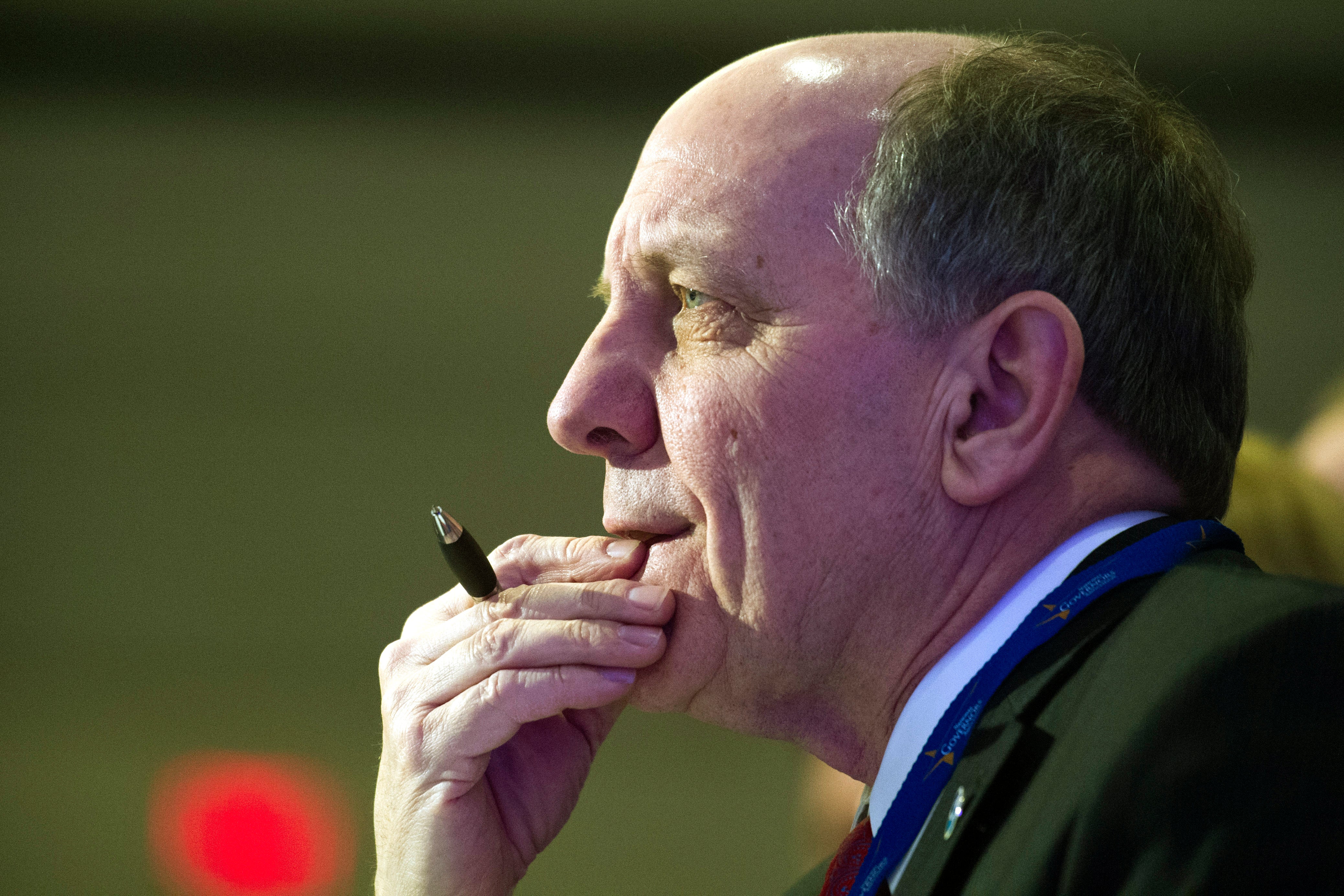After decades in eye of storms, weather service head retires
National Weather Service chief Louis Uccellini says he will retire at the end of the year

Your support helps us to tell the story
From reproductive rights to climate change to Big Tech, The Independent is on the ground when the story is developing. Whether it's investigating the financials of Elon Musk's pro-Trump PAC or producing our latest documentary, 'The A Word', which shines a light on the American women fighting for reproductive rights, we know how important it is to parse out the facts from the messaging.
At such a critical moment in US history, we need reporters on the ground. Your donation allows us to keep sending journalists to speak to both sides of the story.
The Independent is trusted by Americans across the entire political spectrum. And unlike many other quality news outlets, we choose not to lock Americans out of our reporting and analysis with paywalls. We believe quality journalism should be available to everyone, paid for by those who can afford it.
Your support makes all the difference.Louis Uccellini has watched dangerous storms brew — one notable political one and many meteorological ones — and survived. Now after eight years leading the National Weather Service he’s retiring.
Uccellini announced Tuesday he is stepping down at the end of the year after 43 years researching, forecasting and coping with weather that has become ever more extreme because of climate change and a political storm that erupted after the White House changed a hurricane forecast map.
Uccellini started asking about the clouds in the sky and the snow on the ground soon after he learned to talk, inspired by 1960's Hurricane Donna that blew over his Long Island home, followed by three blizzards. It turned him into a weather geek. He went on to help create a rating system for winter storms and wrote more than 70 scientific studies and books.
Uccellini 72, spoke to The Associated Press about his tenure — including a clash with the Trump administration over a Hurricane Dorian forecast, his love of storms and efforts to lessen the impact of extreme weather. The conversation, which took place as Hurricane Ida swamped New York, has been edited for clarity and length.
Q: The weather service has improved its forecasts over the years, but those gains often get counteracted by the weather getting more extreme because of climate change. Does it get frustrating?
A: We’re not frustrated by that, it’s part of what brings us to work every day. We want to do better. We want to be able to work within this new climate environment. And it’s not just the floods. It’s not just hurricanes. It’s not just severe weather and blizzards. Look at the fire weather situation. We used to have fire weather seasons. We now have fire weather year.
What I can do and what the weather service is positioned to do is to deal with the natural events as we’re forecasting them, as we’re learning more about them, to be able to communicate to the folks who actually have to deal with mitigating the impacts.
We have a societal issue here as to whether the infrastructure can keep up with a rainfall rate of three inches an hour in New York City, the (nearly) 20 inches of rain that fell southwest of Nashville, Tennessee. Is the infrastructure ready for the magnitudes of these storms? It doesn’t appear to be that way.
Q: During Hurricane Dorian, then-President Donald Trump mistakenly said it was threatening Alabama when in fact it was headed to the East Coast. Someone in the White House used a sharpie to change Dorian’s forecast track to match the president. Weather service meteorologists in Alabama contradicted the president, and were reprimanded. What was Sharpiegate like for you?
A: I immediately realized that this was probably going to be the biggest leadership — not management, leadership — challenge that I had ever faced and would likely ever face.
Ten minutes before (the public reprimand) was released I was given a courtesy call. And I just said, “This ain’t going to go down well.” So we had to track (the Alabama office chief meteorologist) down through his personal cell to assure him that I had his back.
Q: That was on a Friday night. By coincidence you were scheduled to speak Monday morning at a weather convention in Alabama. And you publicly thanked the Alabama meteorologists, saying they did the right thing, contradicting the White House. Were you worried?
A: I was prepared to be fired for challenging the White House. I didn’t use the word White House and I didn’t use the word president.
Q: How did you get interested in weather?
A: The moment that I realized that this is what I was going to do for the rest of my life was 1960. Hurricane Donna was right over our house. And then in December of 1960, we had a massive snowstorm that got us excited.
And then we had the 1961 January storm, it hit Long Island with another 15, 16 inches of snow. And then we got the February 2nd to 4th storm that dumped two feet. And get this, the snowplow broke down on the end of the street.
Q: What weather app is on your phone?
A: I don’t have any apps on my phone. I use the weather service and other input, but I can tell you, my wife has weather apps on her phone and she’ll show me some stuff and I’ll say, “that’s fine.”
___
The Associated Press Health and Science Department receives support from the Howard Hughes Medical Institute’s Department of Science Education. The AP is solely responsible for all content.